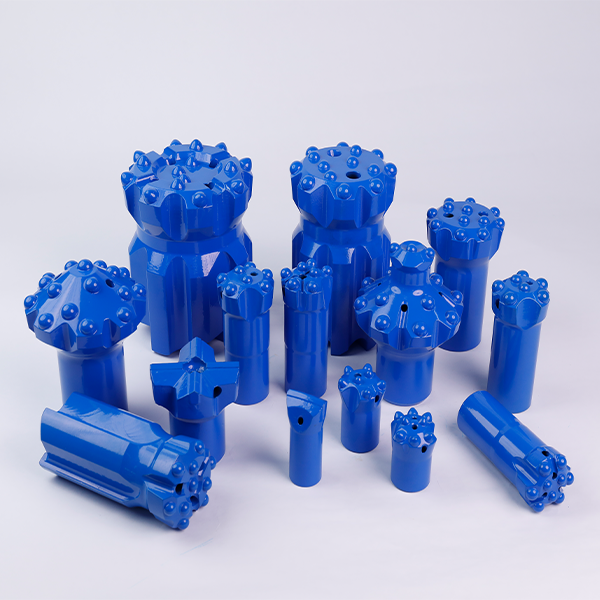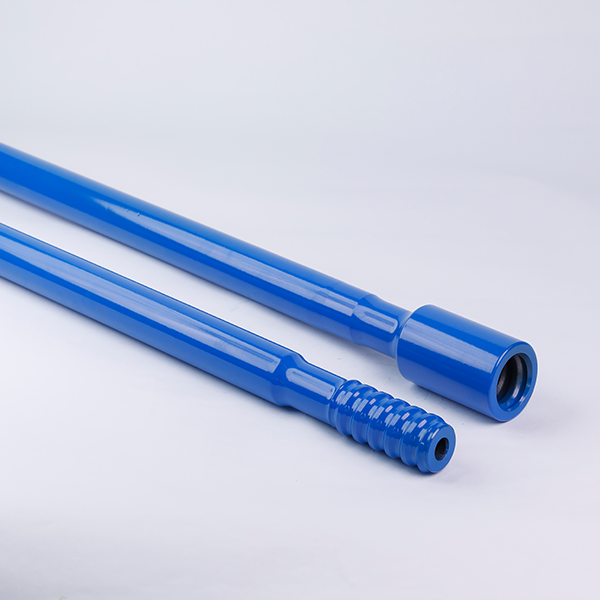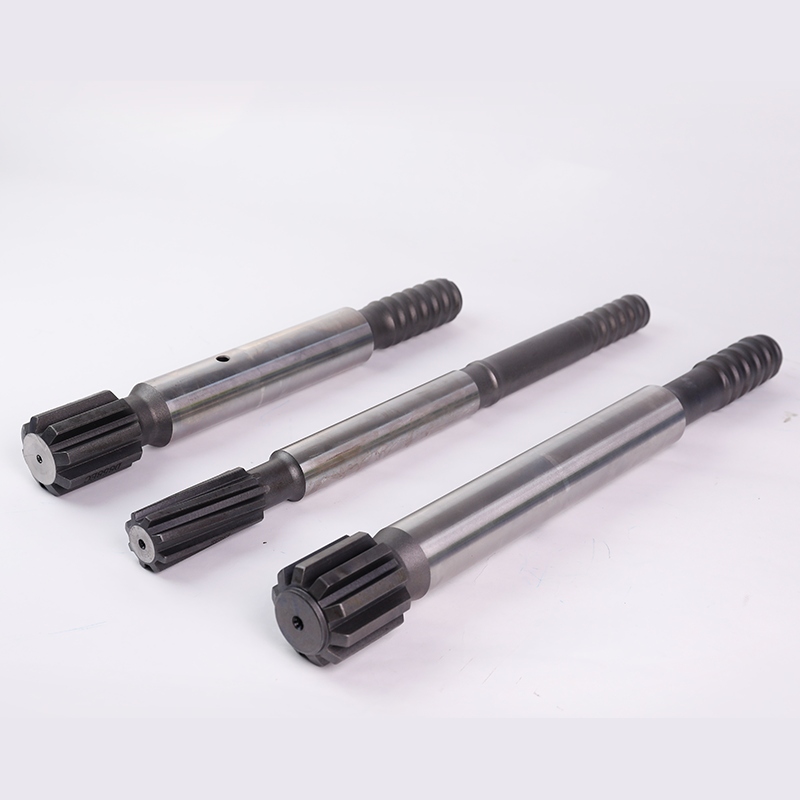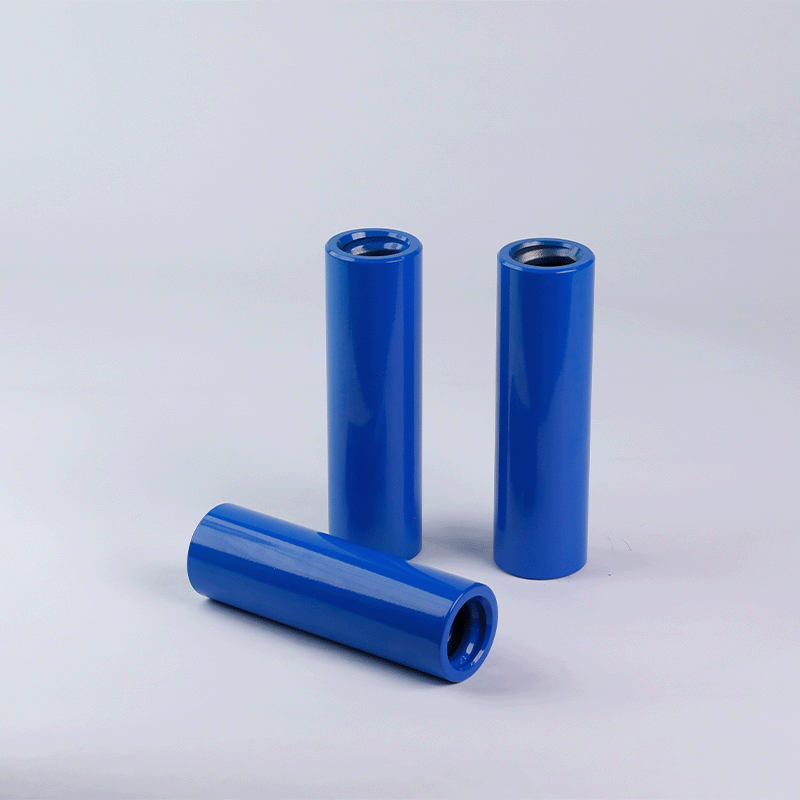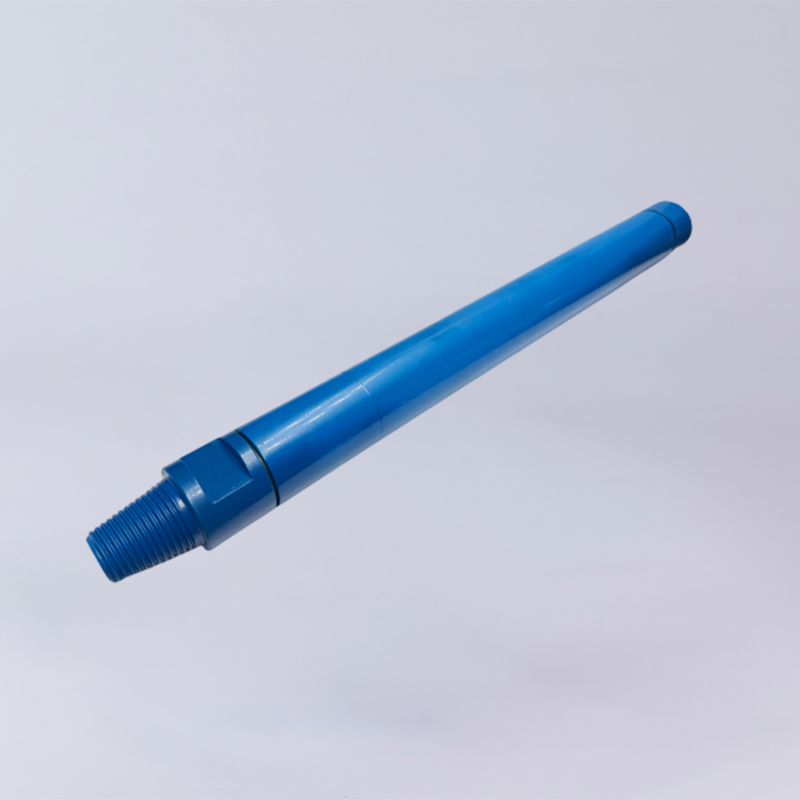The drill rod is an indispensable tool in drilling operations such as exploration, mining, and tunnel excavation. It serves as a crucial medium for transmitting the rotational power and axial pressure of the drilling rig to the drill bit, ensuring that the drill bit can continuously and stably break rocks or other materials and extend the borehole. If the drill rod performs poorly or malfunctions, it will directly affect the drilling efficiency, slow down the drilling progress, and increase construction costs. For example, insufficient wear-resistance of the drill rod will cause premature wear of the rod body. Frequent replacement of the drill rod not only wastes time but also raises material costs.
Therefore, proper transportation, storage, and use of drill rods are of vital importance. Only by ensuring the correct transportation, storage, and use of drill rods can the safety of drilling operations be guaranteed, work efficiency be improved, and the service life of drill rods be extended. To extend the service life of drill rods, this article will provide a detailed introduction to the three key aspects of drill rod transportation, storage, and use, offering a reference for everyone.
How to transport drill rod correctly?
Select the Right Transportation Method
Choose Specialized Transportation Equipment: For drill rods with special specifications or requirements, specialized transportation equipment may be necessary. For instance, in the case of overly long or heavy drill rods that common transportation means cannot handle, customized trailers or cradles are required. These specialized transportation tools should have good load-bearing capacity and stability to ensure the drill rods remain undamaged during transit. Additionally, when using such specialized equipment, appropriate modifications or protective devices should be added according to the characteristics of the drill rods.
Comply with Safety and Regulatory Standards
Subject to Supervision and Inspections by Relevant Authorities: Transportation companies and personnel should actively cooperate with the work of regulatory authorities and provide relevant documents and information truthfully. The regulatory authorities will inspect the safety of the transportation equipment, the integrity of the packaging, and the compliance of the documents. If any issues are found, the transportation company or personnel should promptly rectify them to ensure the safe transportation of the drill rods. Moreover, transportation companies should establish and improve their internal supervision mechanisms, regularly conduct self-inspections and self-corrections during the transportation process to promptly identify and address potential safety hazards.
Transportation Precautions
Civilized loading and unloading
During material handling operations, rock drilling tools are particularly susceptible to impact loading from improper manipulation. While fabricated from hardened steel compositions, unprofessional handlers frequently underestimate the latent consequences of violent handling practices. Surface imperfections induced by such operations serve as stress concentrators that critically amplify cyclic stress in drill rods. This metallurgical phenomenon precipitates abrupt fracture propagation and accelerated fatigue failure mechanisms, necessitating strict adherence to controlled loading/unloading protocols throughout the logistics chain.
Double packing
To systematically mitigate bending deformation, impact damage, and water channel obstruction,double-layer packaging should be used according to regulations, namely, the inner layer is softly packaged and the rock drilling tools should be separated by plastics. In addition, plastic sleeves and water hole plugs should be inserted at both ends of the rod.
Prevent rain and water immersion
The drill rod, constructed from brazing steel, undergoes accelerated corrosion when exposed to atmospheric moisture and oxygen during water immersion or precipitation events. This oxidative degradation mechanism significantly compromises structural integrity, necessitating stringent moisture barrier implementation throughout transportation phases to preserve operational longevity.
How to store drill rod correctly?
Temperature Control
Drill rods should be stored in an environment with relatively stable temperature. The ideal storage temperature generally ranges from 15°C to 25°C. Excessively high temperatures may accelerate the aging and deformation of the drill rod material. Conversely, extremely low temperatures may make the drill rods brittle. Especially in cold-region winters, if drill rods are exposed to low temperatures for an extended period, their impact resistance will significantly decrease, making them prone to brittle fracture when subjected to vibrations or impacts during use.
Humidity Management
Controlling the humidity of the storage environment is a crucial part of protecting drill rods. The relative humidity should be maintained between 40% and 60%. When the environmental humidity is too high, water vapor is likely to condense on the surface of drill rods, which can lead to rust. On the other hand, overly low humidity may cause the material to dry out and become brittle, reducing the toughness of the drill rods and making them more likely to crack when impacted by external forces.
Rust-Prevention Measures
To prevent drill rods from rusting, in addition to controlling temperature and humidity, additional rust-prevention measures are required. Before storage, drill rods should be thoroughly cleaned to remove dirt, oil, and moisture from the surface, and then coated with a special rust-preventive grease. Moreover, it is important to regularly inspect the stored drill rods for signs of rust. Once rust is detected, prompt action should be taken, such as reapplying rust-preventive grease or performing rust-removal operations.
Precautions for storage
Classified storage
Drill rods that have not been wetted and are well packaged should be classified and placed on the rock drilling tools rack after acceptance.
Pay attention to storage.
The storeroom should be dry and ventilated, moisture-proof, rust-proof, and kept in good condition.
Drill rods with damaged packaging or damp, bent, bruised, or blocked water holes should be inspected and repaired one by one, and then repackaged and stored separately.
How to use drill rod correctly?
Pre-operation Inspection and Preparation
Before using the drill rod, a comprehensive and meticulous inspection should be carried out. First, check the appearance. Use a high-intensity flashlight to inspect the rod body, the connection between the drill bit and the shank adapter, and the shank adapter for cracks, as well as scratches, pits and other damages. Then, check whether the threads are intact and free from deformation and wear. A thread gauge can be used to ensure compliance with the standards.
Correct Operation
After installing the drill rod onto the drilling rig and starting it, an appropriate torque should be applied. The magnitude of the torque should be determined according to the specifications, materials of the drill rod and the nature of the rock, with reference to the drilling rig manual. During drilling, closely monitor the torque changes. If any abnormality is detected, stop drilling immediately for inspection. At the same time, it is essential to ensure that the drill rod is precisely aligned with the central axis of the borehole. Special positioning devices or centering auxiliary equipment of the drilling rig can be used. During drilling, pay attention to the direction and correct any deviation in a timely manner.
Lubrication During Drilling
Lubrication during drilling is crucial for extending the service life of the drill rod and improving drilling efficiency. An appropriate lubricant should be selected as required. Since the lubricant will be consumed and lost during drilling, it needs to be replenished regularly. The replenishment interval should be determined based on the drilling speed, depth and the nature of the rock. When replenishing, observe the state of the lubricant and replace it in a timely manner if any abnormality is found.
Precautions for use
Before use
- Exercise stringent control during drill rod handling and transit operations to prevent bending, rust formation, mechanical injury, and flow path obstruction.
- Conduct comprehensive pre-drilling verification of three critical parameters: rock drill shank adapter wear patterns, equipment operational readiness, and drill rod structural integrity.
Correct selection of rock drilling tools and equipment
- Maintain drill rod length-depth geometric compliance, with strict avoidance of excessive longitudinal extension.
- Ensure drill rod-bit interface integrity through precise dimensional compliance and optimal contact surface conditions.
- Select performance-optimized drill bits demonstrating rapid penetration rates and extended service cycles, with diameter specifications aligned with borehole parameters.
In use
- Optimized Drilling Alignment and Parameters: Stress wave transmission, and integrated anti-jamming/auto-feed functionalities. Initiate drilling operations at reduced impact power levels, progressively optimizing shaft thrust, pneumatic pressure, and coolant flow parameters. Maintain strict coaxial alignment between the rock drill assembly and borehole axis throughout operations, ensuring unimpeded cuttings evacuation and drill rod rotational freedom.
- Properly Adjust Rock Drill Parameters: During drilling operations, critical parameters such as impact oil pressure, advancing oil pressure, and rotation oil pressure significantly influence tool wear and overall efficiency. Research indicates that setting the impact oil pressure to achieve a penetration depth of 1/3 to 1/2 the length of the carbide button per strike yields optimal rock-breaking results. Additionally, adjusting the advancing oil pressure to minimize the bending of the drill rods during operation can effectively reduce wear and prolong tool service life. Proper calibration of these parameters ensures efficient drilling while maintaining the integrity of the equipment.
After use
- Implement scheduled maintenance protocols for performance-degraded drill bits, including timely replacement of blunt or expired units, with strict prohibition of compromised cutting implements.
- Mandate the use of specialized extraction tools during tool disassembly processes, explicitly prohibiting manual hammer disassembly methodologies.
- Execute immediate post-use preservation protocols: Drill rods require thorough drying, lubrication, and horizontal storage alignment within designated special drilling rig stand.
- This cutting-edge process not only addresses the challenges of utilizing repaired drill rods in the full-automatic mode of computer-controlled rock drilling jumbos but also significantly enhances their operational lifespan. By adopting these repair techniques, enterprises can achieve greater efficiency and cost-effectiveness in their drilling operations.
Conclusion
Essentially, the standardized transportation, storage, and use of drill rods fundamentally rely on the strict implementation of the "Five Protection Principles." These principles, namely anti-corrosion, anti-bending, anti-impact, anti-water channel blockage, and anti-grade difference protocol, must be systematically maintained throughout the entire service life of the drill rods. Only by correctly following the precautions during the three key processes of drill rod transportation, storage, and use can the service life of the drill rods be effectively extended and their performance advantages be fully utilized.

